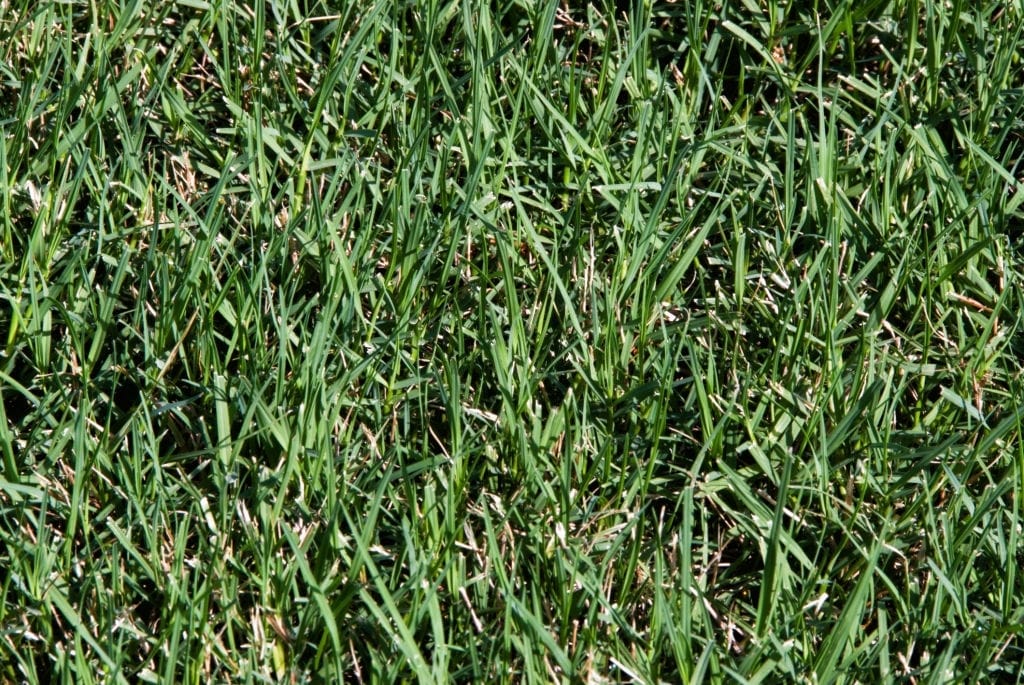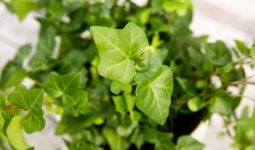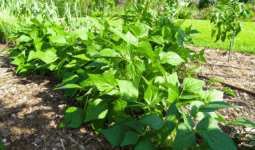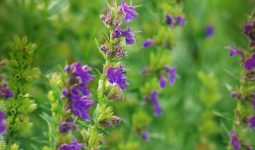Most homeowners pick their Bermuda grass variety based on price alone—a costly mistake that leads to patchy lawns, excessive maintenance, and years of frustration.
The truth is, choosing the wrong type of Bermuda grass can cost three times more in water, fertilizer, and replacement costs than selecting the right variety upfront.
In this comprehensive guide, you’ll discover the 15 different types of Bermuda grass, learn the critical differences between seeded and hybrid varieties, and get a proven framework for selecting the perfect grass type for your specific climate, soil, and lifestyle needs.
Whether you’re starting a new lawn or replacing an existing one, this guide will help you make an informed decision that saves money and creates the lush, durable lawn you want.
Understanding the Two Main Categories: Seeded vs Hybrid Bermuda Grass
Before diving into specific varieties, homeowners need to understand the fundamental difference between seeded and hybrid Bermuda grass types. This distinction affects everything from establishment method to long-term maintenance requirements.
Seeded Bermuda Grass grows from seed and can reproduce naturally, making it more affordable to establish but generally coarser in texture. These varieties adapt well to various conditions and offer excellent value for large areas.
Hybrid Bermuda Grass cannot produce viable seed and must be established through sod, plugs, or sprigs. While more expensive initially, hybrids typically offer superior texture, disease resistance, and overall quality.
Key Takeaway: Seeded varieties cost 60-80% less to establish but require more maintenance, while hybrids offer premium quality at a higher upfront investment.
Seeded Bermuda Grass Varieties: Affordable Options for Large Areas
Common Bermuda (Seeded)
The most widely available and economical option, Common Bermuda serves as the foundation for many lawn installations. This variety establishes quickly from seed and tolerates a wide range of soil conditions.
Best for: Budget-conscious homeowners, large areas, moderate traffic zones Maintenance level: Moderate to high Drought tolerance: Good
Sahara (Seeded)
Sahara exhibits excellent cold and frost tolerance as well as early spring green-up, making it ideal for transition zones where temperature fluctuations challenge other varieties.
Best for: Northern regions, areas with temperature extremes Maintenance level: Moderate Cold tolerance: Excellent
Yukon (Seeded)
Yukon represents one of the most cold-hardy seeded Bermuda grass types available to homeowners. This variety maintains its green color longer into fall and recovers quickly in spring.
Best for: Cooler climates, areas with harsh winters Maintenance level: Moderate Special feature: Extended growing season
Riviera (Seeded)
Known for its fine texture among seeded varieties, Riviera offers an excellent compromise between cost and quality. It establishes rapidly and maintains good density under regular maintenance.
Best for: Homeowners wanting quality on a budget Maintenance level: Moderate Texture: Fine to medium
Princess 77 (Seeded)
Princess 77 delivers exceptional heat tolerance and maintains good color retention during stress periods. This variety works particularly well in southern climates with intense summer heat.
Best for: Hot, humid climates, high-heat areas Maintenance level: Low to moderate Heat tolerance: Excellent
Sundevil II (Seeded)
Developed for improved turf quality, Sundevil II offers better density and finer texture than Common Bermuda while maintaining the affordability of seeded varieties.
Best for: Moderate traffic areas, improved aesthetics Maintenance level: Moderate Density: Good
Mohawk (Seeded)
Mohawk combines excellent drought tolerance with good traffic tolerance, making it suitable for active households and areas with water restrictions.
Best for: Drought-prone areas, active families Maintenance level: Low to moderate Water requirements: Low
Hybrid Bermuda Grass Varieties: Premium Options for Superior Quality
Tifway 419 (Hybrid)
The gold standard for hybrid Bermuda grass, Tifway 419 has dominated the market for decades due to its exceptional durability and consistent performance. This variety handles heavy traffic while maintaining excellent color and texture.
Best for: High-traffic areas, sports applications, premium lawns Maintenance level: Moderate to high Traffic tolerance: Excellent
TifTuf (Hybrid)
TifTuf ranked #1 in turf quality among major commercially-available bermudagrass cultivars and uses up to 38% less water than other Bermuda varieties while maintaining superior quality.
Best for: Water-conscious homeowners, drought-prone areas Maintenance level: Low to moderate Water savings: Up to 38% less than other varieties
Tifgreen 328 (Hybrid)
Originally developed for golf courses, Tifgreen 328 offers extremely fine texture and dense growth. This variety requires more maintenance but delivers unmatched aesthetic appeal.
Best for: Homeowners prioritizing appearance, formal landscapes Maintenance level: High Texture: Very fine
TifSport (Hybrid)
Engineered for athletic fields, TifSport provides exceptional injury recovery and wear tolerance. This variety bounces back quickly from damage and maintains playability under stress.
Best for: Active households, play areas, pet owners Maintenance level: Moderate Recovery speed: Excellent
Celebration (Hybrid)
Celebration combines excellent shade tolerance with superior color retention, making it versatile for various landscape conditions. This variety performs well in up to 6 hours of shade daily.
Best for: Partially shaded areas, mixed sun/shade lawns Maintenance level: Moderate Shade tolerance: Good (up to 6 hours shade)
Latitude 36 (Hybrid)
The most cold-hardy hybrid variety available, Latitude 36 extends the growing range of Bermuda grass into northern regions previously unsuitable for the species.
Best for: Northern climates, transition zones Maintenance level: Moderate Cold tolerance: Superior
NorthBridge (Hybrid)
NorthBridge is cold-tolerant and provides excellent spring green-up in challenging climates. This variety maintains good quality in areas where other Bermuda types struggle.
Best for: Cooler regions, challenging climates Maintenance level: Moderate Spring recovery: Fast
GN-1 (Hybrid)
A newer hybrid variety offering improved disease resistance and drought tolerance, GN-1 represents the latest in Bermuda grass breeding technology.
Best for: Disease-prone areas, low-maintenance applications Maintenance level: Low to moderate Disease resistance: Excellent
How to Choose the Right Bermuda Grass Type for Your Specific Needs
Climate Considerations
Hot, Humid Climates: Choose Princess 77, TifTuf, or Celebration for heat tolerance and humidity resistance.
Cold/Transition Zones: Select Latitude 36, NorthBridge, or Sahara for cold hardiness and extended growing seasons.
Drought-Prone Areas: Opt for TifTuf, Mohawk, or GN-1 for water efficiency and stress tolerance.
Usage and Traffic Patterns
High Traffic/Active Families: Tifway 419, TifSport, or Mohawk provide excellent durability and recovery.
Low Traffic/Aesthetic Priority: Tifgreen 328, Celebration, or Riviera offer superior appearance with moderate maintenance.
Pet Areas: TifSport, Tifway 419, or Common Bermuda handle pet traffic and recover from damage quickly.
Maintenance Preferences
Low Maintenance: TifTuf, GN-1, or Mohawk require minimal inputs while maintaining good quality.
Moderate Maintenance: Most hybrid varieties offer excellent quality with reasonable maintenance requirements.
High Maintenance: Tifgreen 328 and other premium varieties require intensive care but deliver exceptional results.
Budget Considerations
| Budget Level | Seeded Options | Hybrid Options |
|---|---|---|
| Low | Common Bermuda, Sahara | N/A |
| Moderate | Princess 77, Riviera, Mohawk | TifTuf, Celebration |
| High | Yukon, Sundevil II | Tifway 419, TifSport |
| Premium | N/A | Tifgreen 328, Latitude 36 |
Common Mistakes Homeowners Make When Selecting Bermuda Grass
Mistake #1: Choosing Based on Price Alone
The cheapest option often becomes the most expensive over time due to increased water, fertilizer, and replacement costs. Factor in long-term maintenance expenses when making your decision.
Mistake #2: Ignoring Climate Compatibility
Installing a heat-loving variety in a cool climate or a cold-sensitive type in northern regions leads to poor performance and frequent replacement needs.
Mistake #3: Mismatching Usage Patterns
Selecting a low-traffic variety for high-activity areas results in constant damage and repair cycles. Match the grass type to your family’s lifestyle and usage patterns.
Mistake #4: Overlooking Maintenance Requirements
Choosing a high-maintenance variety without considering time and resource availability leads to disappointed expectations and declining lawn quality.
Pro Tip: Create a simple scoring system rating each variety on climate match, traffic tolerance, maintenance needs, and budget fit. The highest-scoring option typically provides the best long-term satisfaction.
Establishment and Long-Term Success Tips
Seeded Varieties
- Timing: Plant in late spring when soil temperature reaches 65°F consistently
- Seed rate: Apply 1-2 pounds per 1,000 square feet for optimal establishment
- Watering: Light, frequent watering until establishment, then deep, infrequent irrigation
- First year: Expect gradual improvement; full quality develops in year two
Hybrid Varieties
- Installation: Professional installation recommended for sod; DIY possible with plugs
- Timing: Install during active growing season (late spring to early summer)
- Watering: Deep watering immediately after installation, then adjust to variety needs
- Establishment: Faster than seeded varieties; full quality within 6-8 weeks
Year-Round Maintenance Schedule
Spring: Apply pre-emergent herbicide, begin regular fertilization program Summer: Maintain consistent watering, monitor for pest/disease issues Fall: Reduce nitrogen, prepare for dormancy transition Winter: Minimal activity, plan for spring renovation if needed
Making Your Final Decision
The key to choosing the right Bermuda grass type lies in honestly assessing your priorities, climate, and commitment level. Consider these final questions:
- What’s your primary goal: lowest cost, best appearance, or minimal maintenance?
- How much time can you realistically dedicate to lawn care weekly?
- What’s your total budget including establishment and annual maintenance?
- How does your climate align with each variety’s strengths?
Common Mistake Alert: Don’t choose a variety because it works well for your neighbor. Their soil, sun exposure, and maintenance habits may differ significantly from yours.
Next Steps for Your Bermuda Grass Project
Start by identifying your top 3 variety choices based on this guide, then contact local extension services for region-specific recommendations. Test your soil through cooperative extension offices to understand any amendments needed before installation.
Consider visiting local sod farms to see different varieties in person, and get quotes from multiple suppliers to compare establishment costs. For seeded varieties, purchase from reputable seed companies that provide variety-specific growing instructions.
Remember, the “best” Bermuda grass type is the one that matches your specific needs, climate, and maintenance preferences. Take time to make an informed decision—your lawn will thank you for the next 10-20 years.
Final Recommendation: For most homeowners, TifTuf hybrid offers the best balance of quality, drought tolerance, and moderate maintenance requirements, while Sahara seeded provides excellent value for budget-conscious installations in transition zones.








